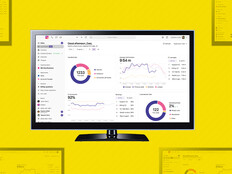LeadingAge 2019: Use Tech to Attract and Retain Senior Care Staff
Keeping staff happy — and keeping them from taking a job elsewhere — is a major challenge for senior care organizations.
Surveys of annual turnover rates in the industry range from 30 to 70 percent, depending on the source, and some attendees at the LeadingAge 2019 conference in San Diego said the talent drain is even more severe.
A revolving-door workforce does more than increase costs to recruit and train new employees. It also puts strain on those who stay and leaves residents at risk. And it may prompt care centers to cut bed availability, hurting their bottom line while denying new patients in need of treatment.
Simple technologies can improve staff satisfaction and streamline workflows in busy senior care settings, said Kathleen Weissberg, education director for Select Rehabilitation. The Illinois-based company has 16,000 employees providing therapy services in 34 states.
The tools, even basic ones, can pay dividends in a tight labor market. Compared with a 7 percent average growth rate across all industries, the home health and personal aide industry is expected to grow 41 percent by 2026, federal data show.
“If we’re not giving employees what they desire, we’re going to lose them,” said Weissberg, who spoke at the conference on Tuesday.
MORE FROM HEALTHTECH: Read all coverage from LeadingAge 2019.
Collaboration Tools in Senior Care Save Time and Money
In a workplace where everyone is busy — and where IT professionals and leadership are increasingly doing their jobs remotely — keeping teams connected saves valuable time.
It’s why Zoom videoconferencing aids staff at Presbyterian Senior Living, which operates 12 continuing care retirement communities across Delaware, Maryland and Pennsylvania. Virtual meetings allow participants to get back to other tasks more quickly and avoid travel expenses.
“It has increased our productivity tremendously,” said Daniel Krieger, vice president of value-based integration and corporate compliance for Presbyterian.
Similarly, secure videoconferencing brings care teams face to face with a patient’s loved ones — often during the workday, when such exchanges might be difficult. The efforts, Weissberg said, open lines of communication and reduce the need for follow-up calls to nurses.
It also eases recruitment. “We do our initial vetting of new employees via the cloud,” Krieger said, noting that the option often helps the organization cast a wider net when filling a vacancy.
READ MORE: Learn how to meet the challenges of clinical collaboration.
Reducing Burdens on Senior Care Nurses with Technology
A growing deployment of Internet of Things tools in the senior space is helping free up time to focus on care, panelists noted. These include wearables for capturing patient data, mobile computers to streamline routine tasks and smart speakers that respond to questions that a nurse would otherwise handle.
On a staff level, panelists said, the use of intranets can drive efficiencies by providing access to key HR documents and boost compliance for training initiatives. Even something as basic as shared Google Docs can eliminate big email chains and save time.
So do secure apps that allow nursing staff to relay details of a patient — with his or her blessing — to their family: “They can log in at any time and see what mom is doing or how far is dad walking,” Weissberg said. “You get real-time data without having to go to the nursing staff.”
She added that executive staff should poll their employees about the pros and cons of their electronic medical record system and work with the vendor to improve any pain points.
Scott Collins, president and CEO of the venture group Link-age, spoke emphatically about software for senior care staff recruitment. One is PayActiv, a payroll tool that allows recipients to access up to $500 in advance of a paycheck for a $5 fee. The others, Arena and OnShift, use data and AI to find and match candidates with positions best suited to their skills and interests.
A reasonable yet secure BYOD policy is also a smart strategy to accommodate younger workers.
Taken together, these things won’t replace the necessity for hands-on care. “This does not supplant what you do with your constituents,” Collins said. “It is an enabler.”
Follow us on Twitter @HealthTechMag, or the official LeadingAge Twitter account, @LeadingAge, and join the conversation using the hashtag #LeadingAge19.









